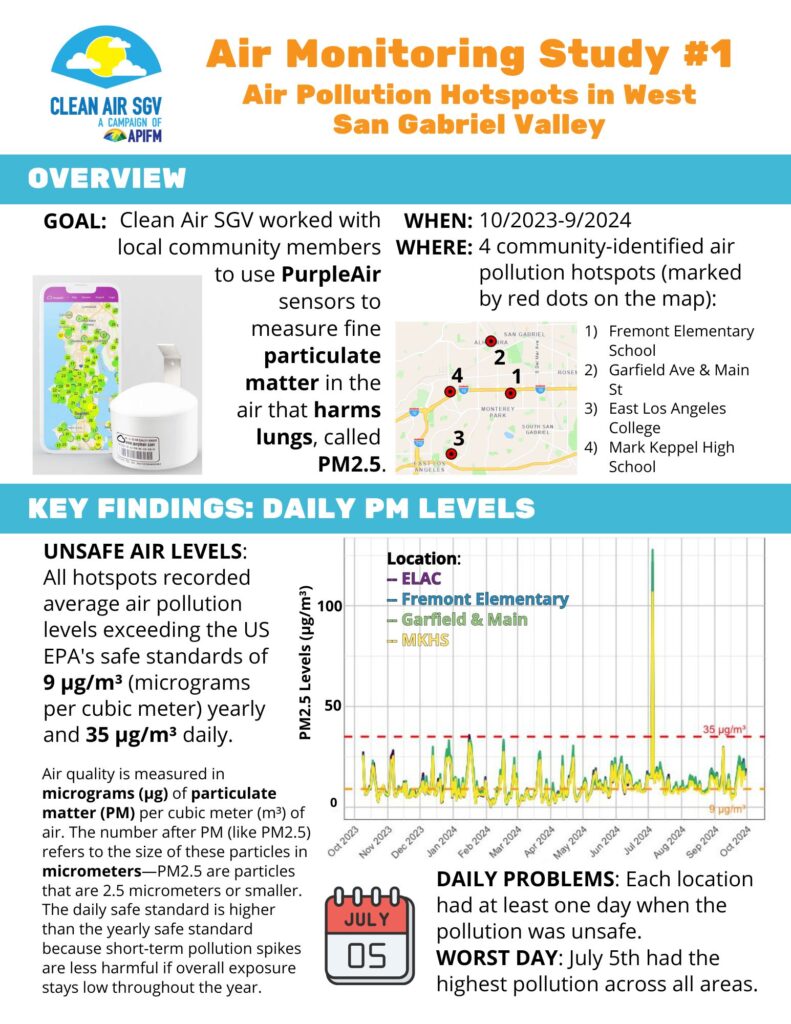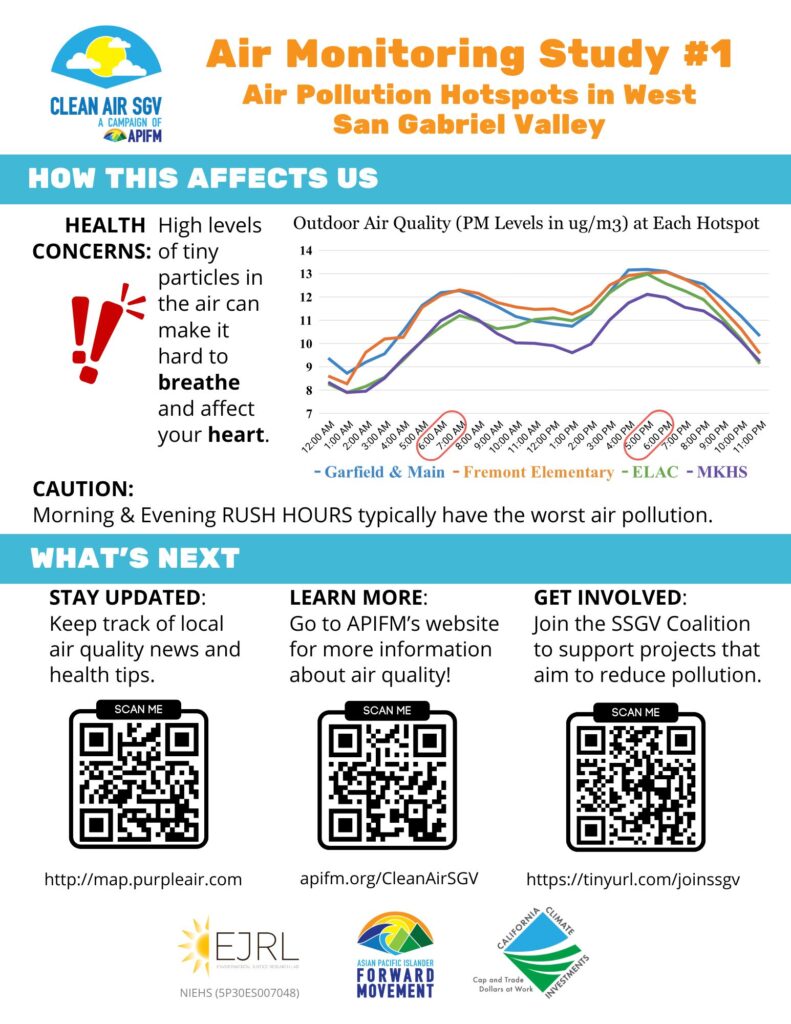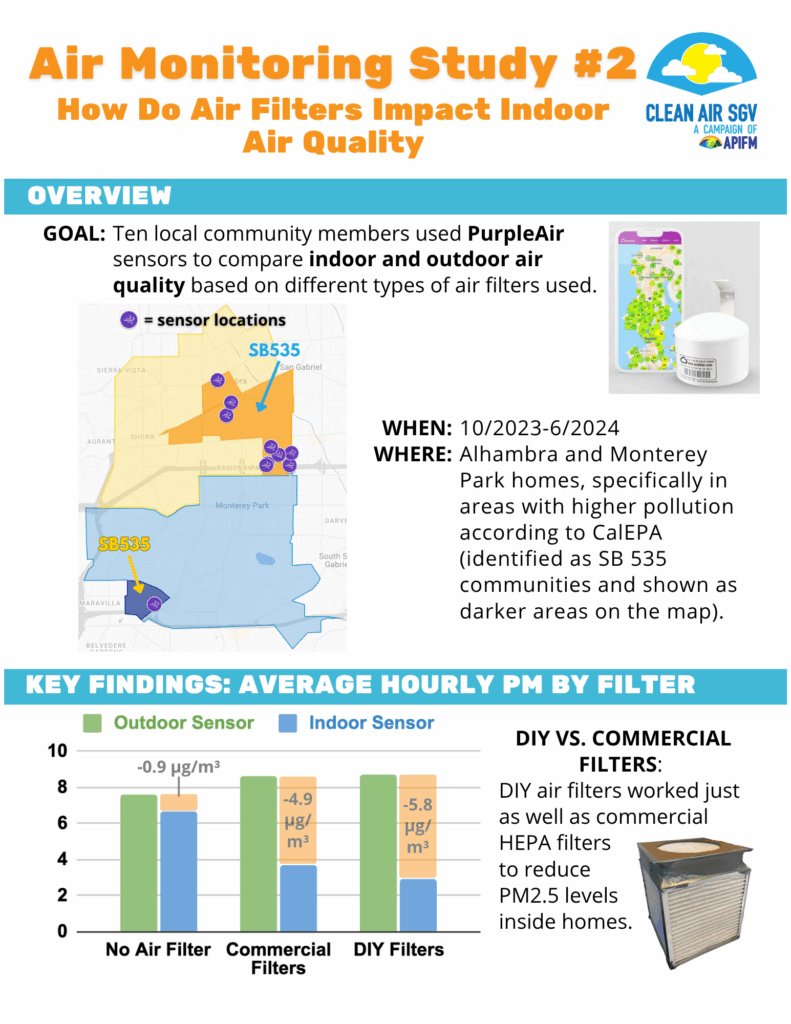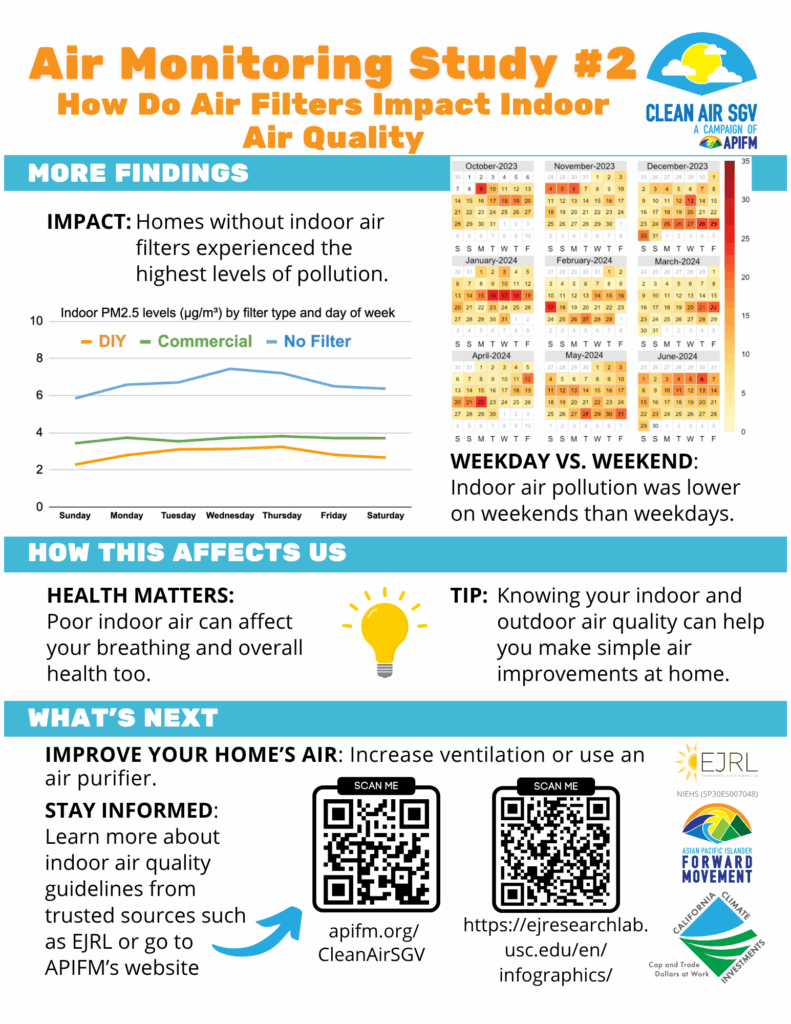Community-Led Air Monitoring in Alhambra and Monterey Park
Background
Alhambra and Monterey Park are two diverse, working-class cities in the western San Gabriel Valley that are significantly affected by air pollution. These communities are bordered by multiple freeways, adjacent to commercial and industrial zones, and experience high volumes of diesel truck and vehicle traffic. Despite these burdens, many areas have historically lacked local air quality data and state monitoring infrastructure.
The Clean Air SGV project was launched in direct response to:
- The 2021 UCI report, Spatial and Temporal PM2.5 Trends in Alhambra and Monterey Park: Application of Purple Air Sensor Network for Asian Pacific Islander Forward Movement (APIFM), which revealed significant data gaps in PM2.5 monitoring. The report highlighted that many SB 535-designated census tracts lacked any sensors and recommended future deployments in those areas, especially near schools and sensitive receptors.
- Ongoing input from residents, particularly youth, who expressed concerns about pollution near schools, freeways, and high-traffic corridors.
- California legislation, including SB 535 and AB 617, which prioritize investments in communities disproportionately burdened by environmental hazards.
This research builds on APIFM’s earlier work and directly responds to the UCI report’s call for expanded sensor coverage and stronger community engagement in pollution-burdened neighborhoods. The current studies expand upon those findings by also evaluating the effectiveness of low-cost indoor air filtration strategies to reduce PM2.5 exposure.
Project Goals
Clean Air SGV is a community-based air monitoring project led by APIFM in partnership with the USC EJRL and 15 local residents. The goals of the project were to:
- Expand the air sensor network in neighborhoods lacking adequate coverage
- Document local PM2.5 pollution trends in high-priority areas
- Evaluate low-cost solutions that help residents reduce indoor air pollution
- Equip residents with data, tools, and experience to advocate for environmental justice
- Generate findings that can inform local policy and support broader AB 617 and SB 535 implementation
About the Community
Alhambra and Monterey Park are home to large Asian American and Latinx populations. These cities are intersected by major transportation routes, including I-10, SR-60, SR-710, and SR-19, which expose residents to elevated levels of fine particulate matter. According to CalEnviroScreen 4.0, several census tracts in these cities rank in the top 25 percent of pollution burden statewide. Many are designated as historically disadvantaged communities under SB 535. Residents in these communities face elevated health risks, including asthma, heart disease, and respiratory illness, due to persistent environmental stressors and a lack of access to clean air infrastructure.
Mark Keppel High School, a site featured in our study, is located less than 100 feet from the I-10 freeway. Fremont Elementary and East Los Angeles College, two other featured locations, are also near heavy traffic or industrial activity. These communities face a combination of poor environmental conditions and limited infrastructure for monitoring and responding to air pollution threats.
Project Presentation
Watch a short presentation to learn about the project, how the studies were designed, and what we discovered here.
Study Summaries and Infographics
Study 1: Outdoor PM2.5 Monitoring at Community Hotspots
Purpose: Fill data gaps by measuring outdoor PM2.5 levels at four community-nominated hotspot locations.
Approach:
- Sensors installed at two locations in Alhambra and two in Monterey Park
- Hotspots identified through community mapping activities and feedback
- Monitored hourly PM2.5 levels from October 2023 to September 2024
Key Findings
- Average PM2.5 levels exceeded annual EPA and state thresholds at all sites
- Highest pollution levels occurred during weekday rush hours and on weekends
- Major pollution sources included freeway traffic, school zones, and nearby industrial operations
- July 5th recorded the highest PM2.5 levels, likely due to fireworks
Study 1 Community Reports:
Chinese (Simplified or Traditional) | Japanese | Korean | Spanish | Tagalog | Thai | Vietnamese
Study 2: Indoor Air Quality and Filter Effectiveness
Purpose: Assess the ability of different air filters to reduce indoor PM2.5 in homes located in SB 535 communities.
Approach:
- Ten homes were selected in pollution-burdened areas
- Each home was assigned one of three conditions: commercial HEPA filter, DIY box fan filter, or no filter
- Sensors collected indoor and outdoor PM2.5 levels over nine months
Study 2 Key Findings
- Homes with filters had indoor PM2.5 levels that were 5 to 6 micrograms per cubic meter lower than outdoor levels
- DIY filters performed slightly better than commercial filters
- Homes with no filters showed minimal improvement and sometimes had worse air quality indoors
- Filters were especially helpful during wildfire events, such as the Eaton Fire
Study 2 Community Reports:
Chinese (Simplified or Traditional) | Japanese | Korean | Spanish | Tagalog | Thai | Vietnamese
Full Technical Report
To learn more about the research methods, statistical analyses, and policy implications, download the complete technical report.
Read testimonials and see photos from study participants below:






